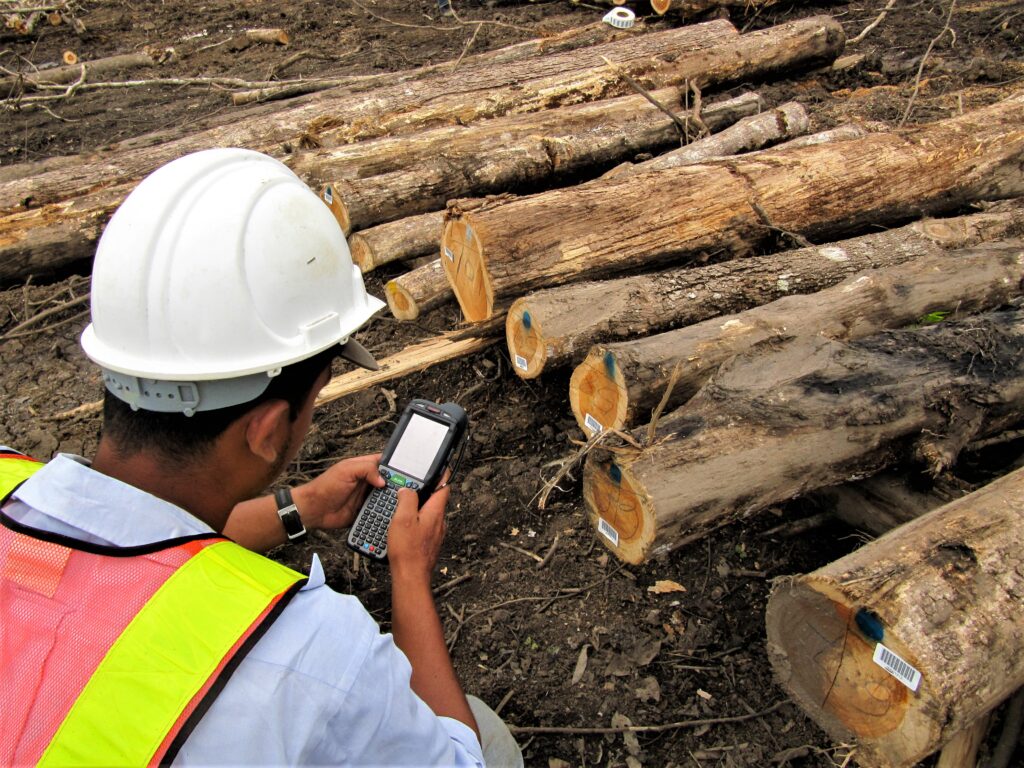As the old adage goes, What gets measured gets done! And this definitely holds for impact forest investments in the tropics. In this fifth and final part of The ForestLink’s Building a winning forest impact investment strategy series, I discuss why you need to be strategic in how you measure, report and verify impact within your investment strategy – for credibility, business growth, and risk reduction, in a way that won’t strip profit from your bottom line.

What is MRV?
Probably not the most glamorous topic to hash out technically, but the importance of MRV, that is Monitoring, Reporting, and Verification, in your impact management cannot be emphasized enough. Creating impact in line with your investment mandate is of course intrinsically important, but I argue that the benefits of your impact investment will go way beyond meeting your impact targets and will greatly influence your business. But you can’t do this credibly, just by saying that you have an impact investment. You need to manage for impact, and in so doing, you need to measure it, report on it, and verify it. This article will show you what to consider when designing your impact strategy’s MRV system.
What to measure?
Start with designing a Theory of Change and Impact pathways
I created this guide to help you design your own SDG-aligned Theory of Change (ToC) for forest impact investments in the tropics. Here, I provide various approaches to capturing your impact thesis, including a dashboard for setting targets. Targets set the stage very early on in your impact journey for what impact criteria and indicators will be managed. In this guide, I also draw attention to the importance of not over doing it with your target list. If you go down this rabbit hole of trying to capture everything, you will end up capturing nothing, nor will you be credible in your approach. So, when considering WHAT to measure, you really must follow the impact pathway in your ToC to ensure you are addressing the real levers that will help you meet your impact goals.
Aim for continuous progress
When setting your targets, and thus what you will manage and measure, I would also recommend choosing some metrics where you will be able to demonstrate continuous progress – for example: hectares planted, CO2 sequestered. If you have an entire dashboard of targets where your outcomes are all met in year one, and you hold the investment for ten years, it won’t make for a very good demonstration of your continued added impact value. Examples of this could be one-time outcomes, such as “built a school”, instead you could show “number of students educated per year”. This isn’t to say that you should omit from reporting to your stakeholders that you built a school, just think twice about how and where you report this (maybe not on your dashboard).
The benefits of including risk metrics
Another consideration to make when thinking about what to manage and measure is risk. When you choose an impact metric, where there is potential for risk – either to the investment or in creation of unintended negative social/environmental impacts, it is wise to select targets that will allow you to keep an eye on risk. As the title of this article suggests – what get’s measured gets done. If, for example, you decide that there is a high likelihood and negative consequence of maintaining job continuity over the various lifecycle of your investment – you could identify maintaining X number of jobs per year as a target. Keeping this as something you always aim to achieve, you will get creative in your approach, and perhaps arrange partnerships with other stakeholders to develop off-season job opportunities or create alternative livelihood trainings for these people to attain other work.
There’s nothing wrong with picking the low-hanging fruit
A time and money saving approach to impact target selection includes picking the low-hanging fruit. In this context, I mean choosing targets that are very easy and straightforward to capture, or those that you need to measure and manage because of another requirement of your business. Examples of this are number of trees planted, number of hectares planted, volume of wood produced, area managed under sustainable forest management, area of forest protected. These are all numbers you will be sitting on to roll-out your silviculture regime, track your inventory, or to maintain your FSC certification (if this is something you will acquire). On the social side, it could be easily tracking gender, pay and number of employees. There is no need to create complicated impact targets that are going to be costly to manage, which in the end, may not provide more meaningful impact data than could be collected in a simpler way.
How to measure it?
Methodologies for impact accounting
Now that you have identified your ‘criteria and indicators’, or ‘impact, outcomes and outputs’ within your ToC, you must determine HOW you will measure it. This involves either designing your own, or adopting a well-recognized methodology for the impact in question. Though designing your own approach has many merits, in that it can be tailored to your unique context, it may end up lacking outward credibility. In essence, it could be seen as developing your own certification standard and promoting your conformance to it. The way to add credibility to this approach, is to have a relevant 3rd party expert verify your methodology (more on this below). When choosing to adopt an existing methodology, you will need to dig into the details surrounding the impact characteristics. Below are some examples from the certification world where you can find methodologies for relevant impacts in the context of forest investments in the tropics:
- FSC Ecosystem Services Guidebook: Provides a variety of methodologies for measuring different ecosystem services: Biodiversity and conservation, Carbon sequestration and storage, Watershed services, Soil conservation, and Recreational Services. The application of these is recognized under the FSC ecosystem services procedure as a way to demonstrate and be able to market ecosystem services impacts,
- Plan Vivo Guidance and Approved Approaches: Provides a variety of methodologies for measuring different ecosystem services, and socio-economic criteria to qualify a project for registration under the Plan Vivo Standard (community driven ecosystem service certification),
- Gold Standard SDG Impact Quantification: Among the several standards that Gold Standard has defined methodologies for, one which is a bit different than some of the other carbon certification standards is around SDG Impact Quantification, where they include methodologies for measuring emission reductions in soil carbon, agriculture, afforestation and reforestation, and others, while aligning the impacts to the UN SDGs.
- VERRA’s Jurisdictional and Nested REDD+ (JNR): VERRA, through its Voluntary Carbon Standard (VCS) has developed the unique JNR standard, which through its approved accounting methodologies can be applied to projects that contain both jurisdictional approaches to carbon accounting and nations’ NDCs and the nesting of private sector projects. This will protect against issues such as double counting, additionality, leakage, and permanence.
Key components for your impact measurement methodologies
Whether designing your own, or applying a recognized third-party impact measurement methodology, you will need to consider the following elements in order to remain credible:
Baseline – You need to understand (and thus measure or assess) your pre-investment scenario prior to its implementation if you want to be able to measure your progress toward your desired target. For example, if you aim for improving the carbon sequestration over your management area by 80% through afforestation, you need to know what the carbon balance is before you start planting trees.
Additionality – You need to be able to demonstrate that your investment is going to create additional impact than what would have happened anyway if your investment wasn’t there. Related to the example of improved carbon sequestration – it would be difficult to prove improved carbon sequestration if your strategy is to acquire an existing managed forest and continue managing it under the current approach.
Leakage – Particularly relevant where you have impact targets focused on forest conservation, your methodology must account for how you will ensure (and manage and measure) that other forest areas, are not subject to degradation and deforestation by you keeping people out of the forest you are protecting.
Permanence – This is an issue with a variety of forest related impacts in the tropics. The concern is whether the impact that your investment creates will be “permanent” or only there if you are. Of course, permanent is a big word, and this is why a lot of certification standards that require safeguards for permanence, attach a timeframe to it. When considering how you will manage and measure your impact, consider how you will manage for permanence and identify realistic timeframes for this.
Reporting
The hidden value in impact reporting
The value in a well-designed impact report is priceless. Not only is impact reporting important to investors, but it is important to wider stakeholders. You can draw attention to different types of impact returns, rather than solely financial returns. With impact reporting there is opportunity to tell the story about what your investment is achieving on a more personal level, connecting with the people behind the investment decisions much better than dollars and cents ever can. Consistent impact reporting can attract future investors. There is also the risk mitigation element, where credible and transparent impact reporting can safeguard your investment from media that like to attack land-based investments in the tropics. Furthermore, public-facing impact reporting and communication can also protect you from corruption, because the credible and influential network you build around you will be a deterrent for those who otherwise would seek to exploit you. Ultimately, credible impact reporting allows you to demonstrate your integrity, and in so doing, receive positive recognition. All of this will leave you in a position to scale and replicate your model and grow your business.
Considerations for designing your impact report
There is no universal requirement, nor are there standards bodies governing what must be included in an impact report, compared to financial regulatory requirements. Voluntary approaches are surfacing, as seen with the Operating Principles for Impact Management, but the details are largely left to the manager. An organization may embed impact data into their regular annual report, or they may refer to it as a sustainability report, ESG report, impact report, or some combination of these. Regardless of what you call your report, the following are considerations you will want to make when determining what to include in it.
- Know your audience: Who are you writing your impact report for? Is it the sustainability manager or investment manager of a large institutional investor? Is it for NGO partners? Is it for the public? Perhaps it is a variety of these. Knowing who you are speaking to, will help you to present appropriate information (i.e. focus on impact magnitude, anecdotal stories, financial impacts, scientific results, etc.).
- Be transparent: A sure way to demonstrate transparency is not to sugar-coat results. Consistent and honest reporting, even when your numbers are not as expected is important to build credibility. You can always explain why things didn’t go as planned, or adjust your management practices to make improvements, but only focusing on the things that go well can hurt both the sustainability of your investment (you may lose sight of issues that need improvement), and your credibility in the long-run (everyone likes to see continuous improvement). To avoid drawing attention to negative results in your outward facing communication – you can always communicate that the public document represents “impact highlights”, or something similar, so long as you are reporting on negative impacts as well, and ensuring that certain stakeholders privy to confidential information have access to all results.
- Use stories: Nothing demonstrates impact like a well-articulated example of achieved impact. Of course, the numbers and dashboard are important for showing progress, but a story with pictures and / or video has the power to reach people on a more personal level, and really makes the difference when communicating impact.
- Show progress: As indicated earlier, when choosing which metrics to include in your dashboard, it is always beneficial to show progress. Compared to financial reporting which generally shows past results together with current results, and often forecasts – impact reporting often only shows a snapshot of the current situation. This makes it difficult to see progress – is the number presented an improvement? Is the situation worsening? Where possible, show how the impact has developed, and where the current reporting period is, in relation to the impact targets.
- Gain visibility: Going back to the ability for your impact report to both increase business value and reduce risk – I stand behind gaining visibility in your impact creation. Publish your results, share them with social media, present them at conferences – do what you can to let your impact achievements be known. This is how a truly impactful forest investment strategy in the tropics can be replicated and reach scale – as others learn of your work and want to partner in its expansion.
Verification
This is the part of the impact management process that is often skimmed over. The reason is obvious – it costs money and time and is not required by any regulatory body. The difference of course is if you have a shareholder, or other partner that requires it. In the impact world, verification is often addressed through voluntary certification. Certification, by its very nature is rooted in independent verification, and the primary reason for acquiring certification is often the credibility that achieving third party verification awards.
If your investment is smaller scale, where the costs of acquiring and maintaining certification are not feasible, there are other ways to verify your results that are less costly. These could include:
- Advertise and invite the general public, local authorities and other stakeholders for consultation and feedback on your management plan and impact results,
- Publish your impact report on your website or other media channels and request feedback,
- Set up a consistent stakeholder engagement procedure related to the above points, that includes a process of consultation, documentation, and follow-up,
- Make use of third party experts required by other parts of your business – for example, shareholders may require a third party appraisal of the forest assets. Here, you can obtain third party validation of your forest inventory (and thus associated impact data, such as number of trees planted, area managed, etc.).
Regardless of the approach to verification, whether through a certification standard, specific third party expert engagement, or voluntary public consultation; verification is an important part of your impact management framework and adds credibility to your impact investment.
Simplifying MRV for your strategy
If you need assistance to create a MRV system that simplifies how impact is measured, reported and verified for your forest impact investment in the tropics, please reach out. In my view, MRV should help credibly manage and communicate your impact, while building business value and reducing risks, whilst at the same time it should not be cost prohibitive. If you share a similar view and would like to explore how we can work together, I would love to hear from you.




